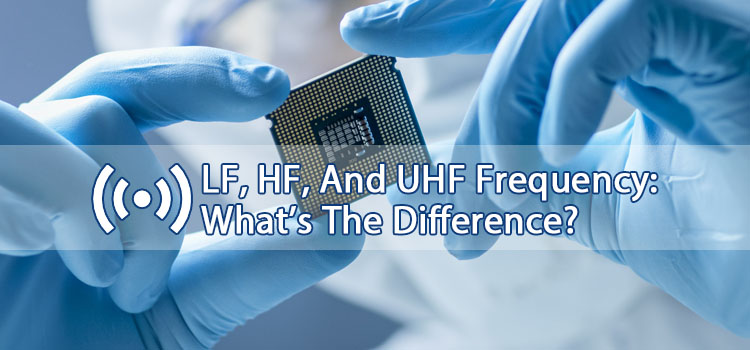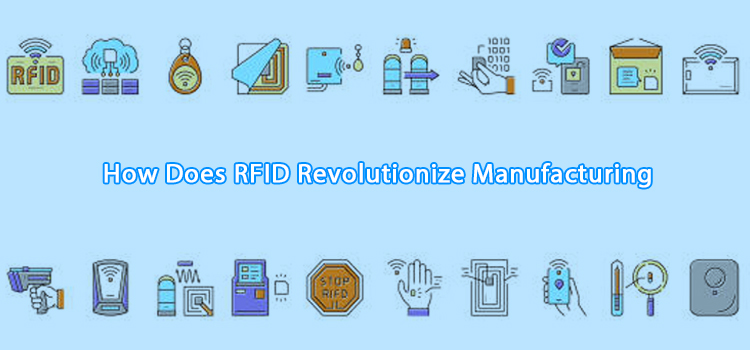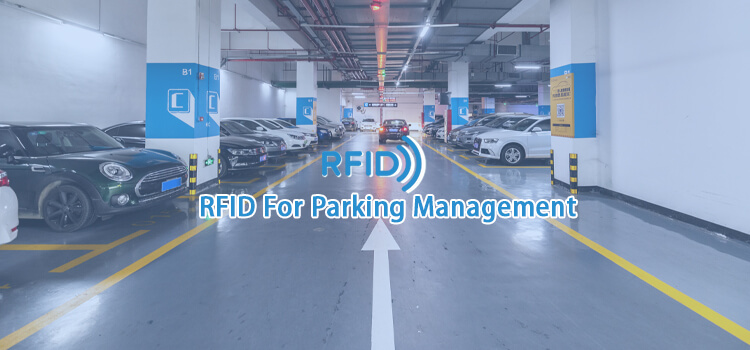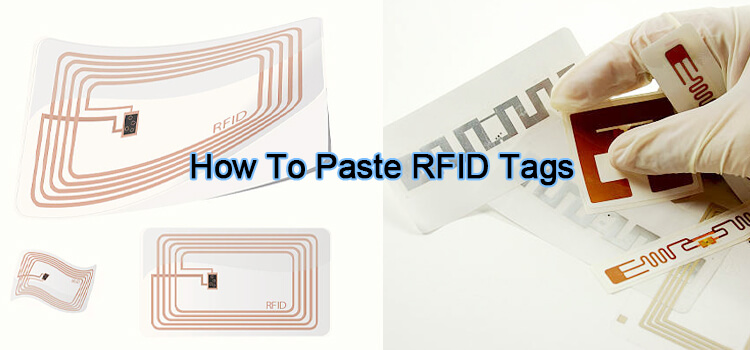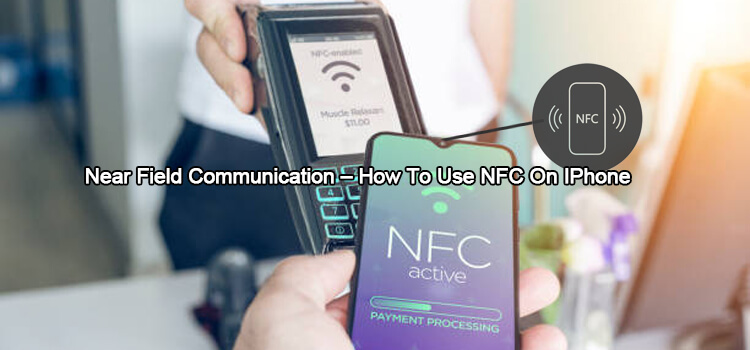If you are planning to integrate RFID technology into your business, you will need to understand the different frequencies, and how they can impact your project.
The RFID frequencies are categorized into low frequency (LF), high frequency (HF), and ultra-high frequency (UHF). Each one has its benefits and drawbacks. As such, it’s important to choose the right one for your needs.
We answer the “LH, HF, and UHF Frequency: What’s the Difference?” question. We also include examples of where each frequency is best used, to help you make the most informed decision for your business.
What is Frequency?
Before we dive into the different RFID frequencies, let’s first look at what frequency is. Frequency is simply the number of times that a waveform repeats per second. It is measured in hertz (Hz).
The units for measuring frequencies vary as follows:
- Hz. This refers to the number of times per second that a waveform repeats.
- KHz. This stands for kilohertz and refers to 1,000 Hz.
- MHz. This stands for megahertz and refers to 1,000,000 Hz.
- GHz. This stands for gigahertz and refers to 1,000,000,000 Hz.
On the other hand, the wavelength is the distance between two successive peaks or troughs of a waveform. The frequency (F) is conversely related to its wavelength. As such, the higher the frequency, the shorter the wavelength.
This explains why it is easier to intercept high frequencies than low frequencies. This factor makes it difficult to use high-frequency tags in a region with other radio wave signals.
Types of RFID Frequencies
There are three main types of RFID frequencies: low, high, and ultra-high. Each frequency has its unique applications and benefits.
1. Low Frequency (LF)
LF RFID operates at a frequency of 125 kHz or 134 kHz. It is the slowest of the three frequencies. It has a read range of up to 10 cm.
LF frequency is not affected by metal objects, making it a good option for tracking items in warehouses and other settings where metal is present.
It also works optimally in moist environments, making it a good choice for tracking livestock and other wet items.
Applications of Low RFID Frequency
- Cattle Tracking. This technology conforms to ISO FDX/B standards, making it ideal for animal tracking. It works well in moist environments and can penetrate through up to 2 inches of flesh.
- Asset Tracking. LF tags are used for asset tracking in manufacturing and other industrial settings. They are hardy and can withstand harsh conditions, making them ideal for tracking items in areas with a lot of metal or moisture.
- Access Control. LF tags are commonly used for access control, as they have a relatively good read range (though the shortest of the three). As such, the access cards must come very close to the reader for access to be granted.
- Point-of-Sale Applications. This technology is critical for quick checkouts. It is used as an alternative to NFC, which is the preferred option.
2. High Frequency (HF)
HF operates at a frequency of 3 MHz to 30 MHz. However, most of its applications utilizes the 13.56 MHz.
It is the most popular frequency, as it offers a good balance of speed, range, and cost. HF tags can be read from up to one meter away, making them ideal for tracking items in large areas.
They are also relatively affordable, making them a popular choice for low- to medium-volume applications.
HF tags are susceptible to interference from metal objects. As such, they are not ideal for tracking items in settings with a lot of metal.
Applications of High RFID Frequency
- Retail Inventory Tracking. This technology offers a good balance of speed and range, making it ideal for tracking items in large areas.
- Public Transportation. This technology is used for tracking passengers and their luggage in airports and other transportation hubs.
- Library Applications. This technology is used in libraries for tracking books and other items. The tag is placed on the book and can be read by a scanner.
- Patient-Flow Tracking. The technology is used for tracking patients as they move through a hospital. This helps to improve patient care and optimize resources.
3. Ultra-High Frequency (UHF)
UHF RFID operates at a frequency of 860 MHz to 960 MHz. It is the fastest of all three frequencies and has the longest read range (up to 50 feet). This makes it ideal for applications where speed and distance are both important, such as supply chain management and inventory tracking.
Interestingly, UHF RFID systems are the least expensive of the three frequencies. However, they are less resistant to interference, making them a poor choice for use in busy areas.
Applications of Ultra-High Frequencies
- Supply Chain Management. This technology is used for tracking items as they move through a supply chain. It offers a high degree of speed and distance, making it ideal for large-scale applications.
- Inventory Tracking. This technology is used by manufacturers for tracking inventory. It helps them check the stock levels and curate the sales records.
- Asset Tracking.This frequency is ideal for tracking high-value assets. It has a longer read range, and you can use them to track items such as generators and vehicles. Whenever the generator moves out of the RFID zone, you will be notified through a message on your software.
- Access Control. UHF tags are highly effective for access controls in high-profile events. In these cases, the guests will not necessarily wave the card to the reader. Just having them in their wallet is enough for the doors to open automatically! This is due to the longer read distance of these tags.
UHF is ideal for tracking high-value items in a supply chain. It has a longer read range of more than 15 meters, making it efficient for tracking moving assets.
However, it is highly affected by metallic and liquid environments. As such, it is less ideal for tracking items in areas with a lot of metal or moisture.
LH, HF, and UHF Frequency: Which Is Best for You?
Now that you understand the different RFID frequencies, how do you know which one is right for your application?
Here are a few things to consider:
- The read range. This is the distance at which the tag can be read. The higher the frequency, the longer the read range.
- The speed of data transmission. This is the rate at which data can be transmitted between the tag and reader. The faster the transmission, the less time wasted in reading tags.
- The environment. Some frequencies are better suited for certain environments than others. For example, UHF is ideal for tracking items in a supply chain, while HF is better for tracking items in a library or hospital.
- The cost. The lower the frequency, the more expensive the tags will be. LF tags are expensive and more difficult to make compared to the HF ones.
When choosing an RFID frequency, it is important to consider the needs of your application. If you need a long read range, high speed of data transmission, and resistance to interference, then UHF is the best choice.
If you need a tag that can be read through metal or moisture, then LF is the better option.
UHF tags are the cheapest of the three frequencies and have the longest read range. However, they are less resistant to interference than other frequencies, making them a bad choice for use in busy areas.
Emerging Trends in RFID Industry
The RFID industry is constantly evolving, with new applications and technologies being developed every day. Here are a few of the latest trends in the industry:
- Internet of Things. The Internet of Things (IoT) refers to the growing trend of connecting everyday objects to the internet. This includes everything from household appliances to industrial equipment. RFID is a key component of the IoT, as it is used for tracking and managing these objects.
- IoT Applications. RFID is being used in a variety of IoT applications, including Smart Cities, Healthcare, Retail-Logistics, Automotive, Aerospace, and Defense. As such, it is becoming a key part of the global economy.
- 5G Network. 5G is the next generation of mobile network technology, and it will be a key driver of the IoT. 5G networks will be much faster and have a higher bandwidth than current networks, making them ideal for connecting billions of devices.
- RFID in Retail-Logistics. RFID is being used in the retail-logistics sector to improve the efficiency of supply chains. RFID tags can be used to track items as they move through the supply chain, from the supplier to the retailer to the consumer.
- RFID in Healthcare. RFID is being used in healthcare to improve patient care and optimize resources. RFID tags can be used to track patients, medications, and medical equipment.
These are just examples of RFID technology in action. You can expect to see even more innovative uses of RFID in the coming years. The technology is quickly becoming more affordable. As such, more institutions are taking it up.
Related Articles
- A Guide About Different Types Of RFID Tags
- NFC Vs. RFID: What’s The Difference Between Them?
- 6 NFC Forum Types You Need To Know
- What Are RFID Standards?
- Learn All About What Is Nfc Tag
- RFID VS Barcode: Which One Is Better For Your Business
- Everything You Need To Know About RFID Chip
- A Guide To Buying RFID Tags & Equipment
- Most Complete Guide To Custom Smart Cards
- NFC Vs. Bluetooth: What Is The Difference?

